Many cultures have long considered ruby a stone of kings. Not surprisingly, ruby symbolism and lore have many associations with power and wealth. Possessing a ruby purportedly benefited and protected the owner’s estates and assisted in the accumulation of wealth. Notably, this gem would help its owner acquire more gems.

18kt yellow gold necklace, set with approximately 7 ctw of white diamonds and 4.5 ctw of natural, heart-shaped Thai rubies, like the one shown here. Photo courtesy of liveauctioneers.com and Greenwich Auction.
A Stone of Protection
When worn as a talisman, ruby’s mystical properties extended to personal protection. People believed wearing the stone on the left, the heart side would allow the bearers to live peacefully. None could take their land or rank. The blood-colored stone would preserve them from all perils, even their homes from storms.
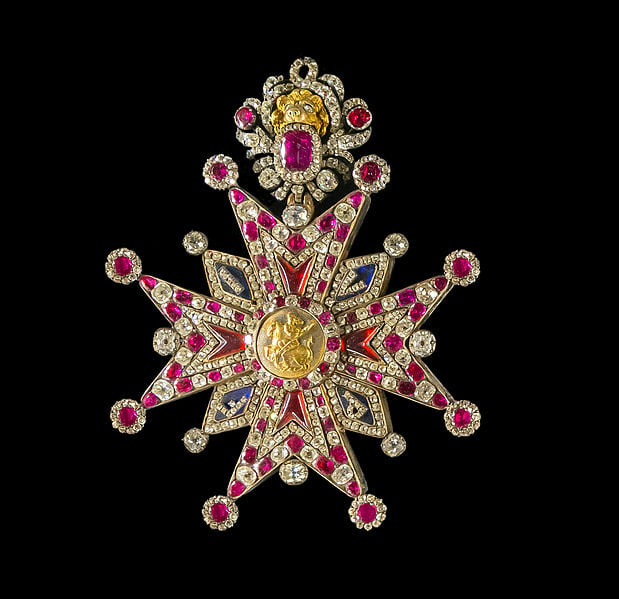
Cross of the grand-collar of the Bavarian Order of Saint George, gold, rubies, and diamonds, on display at the Bavarian Palace Department, Munich, Germany. Photo by Jebulon. Public Domain.
Ruby Symbolism and Blood
Ruby’s blood-like color no doubt encouraged strong associations with this life-sustaining fluid. Those who risked their lives were believed to have a special connection to the gem. The ancient Burmese prized the ruby as the stone of soldiers. They believed it bestowed invulnerability. However, wearing it on the left wasn’t enough. Only those who had rubies physically inserted into their flesh would gain this benefit. They believed they were safe from wounds from spears, swords, or guns.
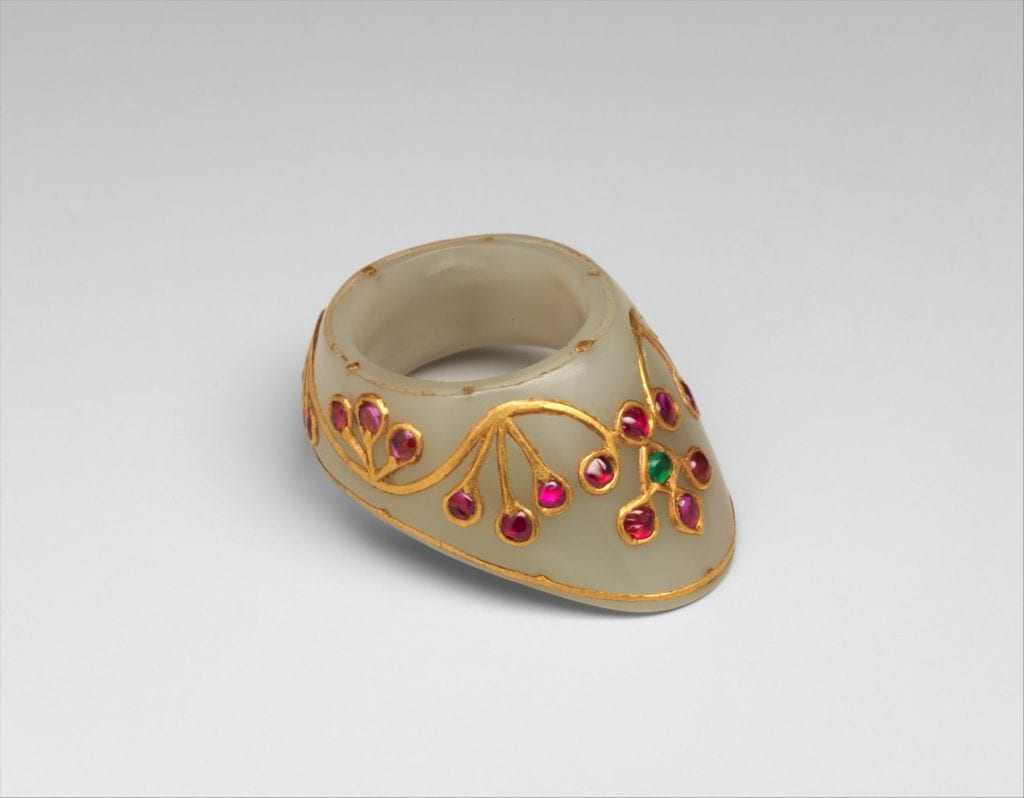
In Indian archery, archers wore rings to protect their thumbs. However, this archer’s ring, made from jade with inlays of gold, rubies, and emeralds, may have functioned more as a costume accessory or status symbol. India, 17th-18th century, 4.4 x 3.2 cm, 28.3 g. Bequest of George C. Stone, 1935. Metropolitan Museum of Art, New York. Public Domain.
Other sources claimed rubies and other red stones could remedy bleeding and inflammation as well as increase the body’s warmth. (In fact, you’ll find that the folklore surrounding another famously red gem, garnet, has many similarities with ruby symbolism and lore. Before the development of scientific classifications of gem species, many people considered all red gemstones to be the same type of stone).
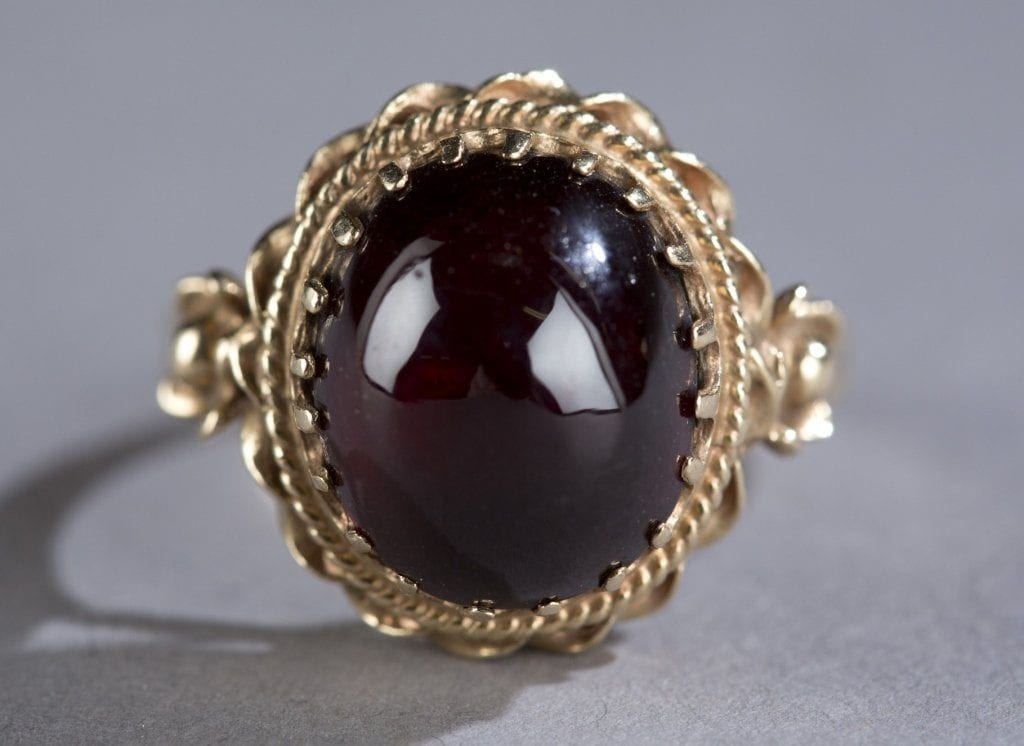
Historically, blood-red cabochons were called “carbuncles” and encompassed gems gemologists would now distinguish as rubies, garnets, spinels, etc. Now, these gems broadly share carbuncle folklore. This 14kt gold ring features a ruby “carbuncle.” Photo courtesy of liveauctioneers.com and Quinn’s Auction Galleries.
The Inner Light of Rubies
Ruby’s inner glow seems to hint that perhaps it contains an inner fire. This visual effect may have inspired some curious bits of lore. A ruby placed in water could bring it to a boil. If hidden in wrapping, the gem could shine through and reveal its presence.
Stories are told of rubies that emit their own light. One was even described as “shining like a torch.”
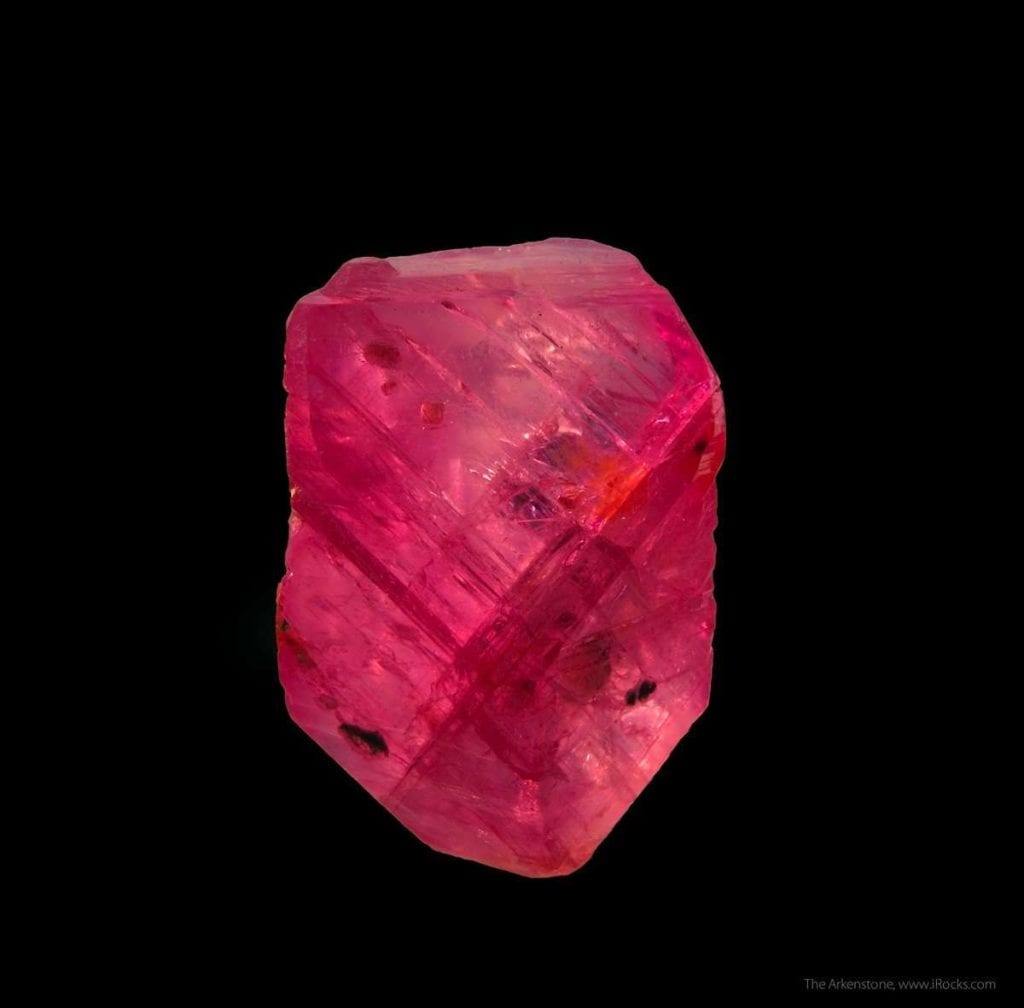
All rubies fluoresce under ultraviolet light, and some rubies have such strong fluorescence that they even seem to glow in the sunlight. This property may have inspired ruby symbolism related to inner light and fire. Ruby crystal, 2.0 x 1.3 x 1.3 cm, Mogok, Sagaing District, Mandalay Division, Myanmar. © Rob Lavinsky, www.iRocks.com. Used with permission.
Living Rubies
All varieties of rubies were thought to hold similar properties. In addition to their protective powers, they reputedly helped control evil thoughts, dispel anger, and resolve disputes. However, darker rubies were considered “male” and lighter gems “female.”
When people in the Middle Ages encountered gems with carved images, they believed such stones occurred naturally. Although these pieces were carved in ancient times, they didn’t think humans worked them. They believed such gems possessed special powers. For example, in the 13th-century work, The Book of Wings, Ragiel writes:
The beautiful and terrible figure of a dragon. If this is found on a ruby or any other stone of similar nature and virtue, it has the power to augment the goods of this world and makes the wearer joyous and healthy.
In the past, some believed spirits inhabited rare and beautiful gems. The concept of gems as sentient beings in their own right may seem unusual. However, the belief that jewelry has “feelings” isn’t dissimilar. The mineralogist George Kunz notes this in the writings of Mme. Catulle Mendes, when she tells of wearing so many rings because her gems feel slighted if she does not wear them.
I have a ruby which grows dull, two turquoises which become pale as death, aquamarines which look like siren’s eyes filled with tears, when I forget them too long. How sad I should feel if precious stones did not love to rest upon me!
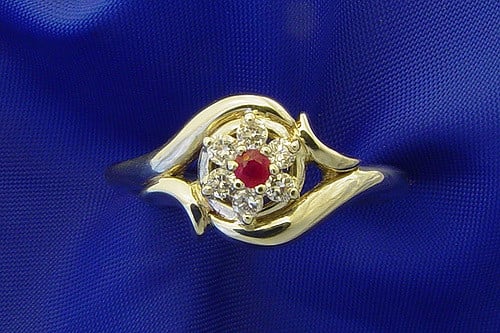
“Yang,” 14kt white gold ring, with ruby and diamonds. Photo by Mark Somma. Licensed under CC By 2.0.
Ruby Symbolism and the Kalpa Tree
Hindus regard the ruby, known as “the king of precious stones,” as more valuable than any other gem. The Mani Mala describes the Kalpa Tree, a symbolic offering to the Hindu gods, as composed entirely of precious stones. Made of sapphires, diamonds, topazes, emeralds, and other gems, this magnificent tree would bear rubies as fruit.
One of the ceremonial offerings Hindus leave at various temples consists of gems and jewelry. Regarding those who gift rubies, the Harita Smriti says: “He who worships Krishna with rubies will be reborn as a powerful emperor. If with a small ruby, he will be born a king.”
Dreams and Ruby Symbolism
An 8th-century Arabic book on dreams by Achametis discusses the significance of dreams of rubies. If a king dreams of a crown set with red jewels such as rubies, this indicates he’ll have great joy and fortune. His enemies would fear him even more. Other sources tell that dreams of rubies indicate success in business. For tillers of the soil, the dreams mean a good harvest.
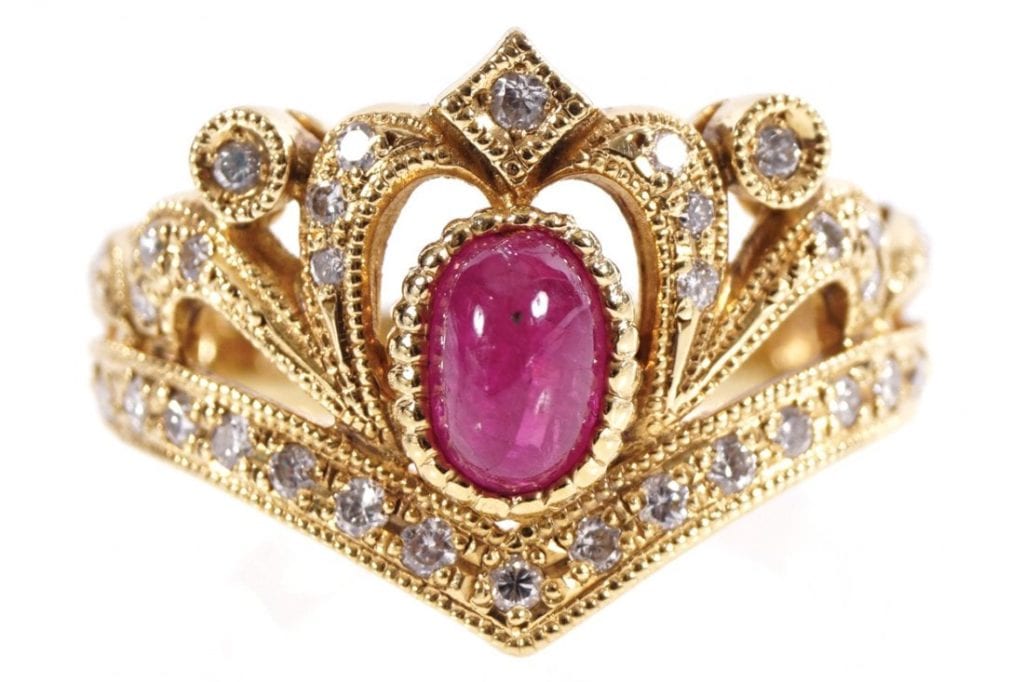
Crown-shaped 18kt yellow gold ring with pavé-set diamonds and a cabbed ruby. Photo courtesy of liveauctioneers.com and Sheppard’s Irish Auction House.
A Stone for Success
With such a long and varied history, no wonder the ruby has acquired such a mystique. We all want our things to be the very best. Of course, ruby owners have a vested interest in their possessions, but the ruby has the reputation and beauty to back such claims. So, if you want a gem to increase your wealth, impress your rivals, and protect you from harm, the legends point to ruby.
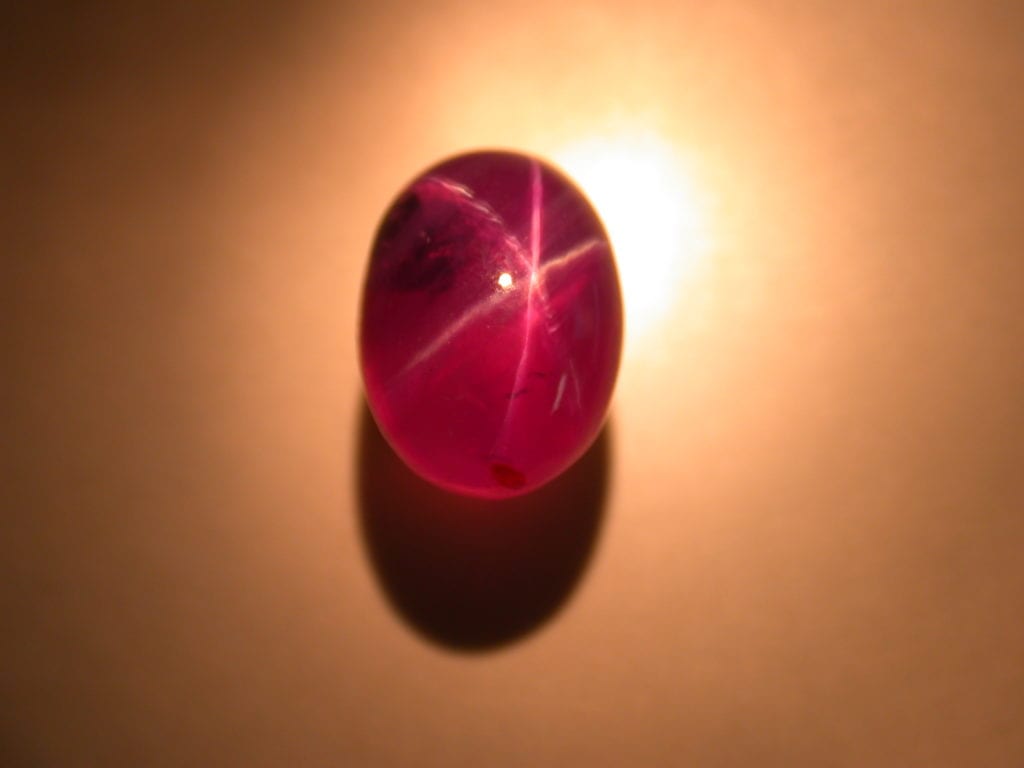
Some rubies may display a star stone effect, like this 8.4-ct gem from Myanmar. Photo © Joel E. Arem, PhD, FGA. Used with permission.
Source: https://www.gemsociety.org/article/history-legend-rubies-gems-yore/

